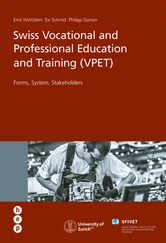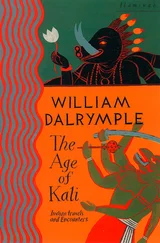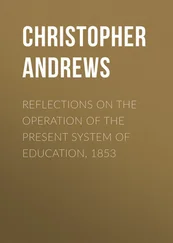2.1 Transition pathways between compulsory school and upper-secondary II education
After completing compulsory school education, students continue with upper-secondary II education (see Figure 2). At this level, the young people have the choice between two main pathways: vocational education and training or general education. Various measures have been put in place to ensure the smooth transition between compulsory education and upper-secondary II education.
One such measure is the provision of numerous independent career information centres (CIC) that support the students in their search for and decision-making process regarding an appropriate education programme, taking into account their interests and abilities. The centres provide unbiased information about all possible educational programmes and can also be consulted for career decisions later in life (SDBB/CSFO 2008).
After visiting the CIC, students are encouraged to get a deeper insight into the desired fields of study or occupations, whether by attending information sessions, taking short «sniffing courses» or pre-apprenticeships (from one or two days up to a week) in companies. In this way, students can compare the expectations they have of the occupation or course with the reality in order to make an informed decision. However, this is only the first step towards their dream job. The second step involves being accepted in the chosen education programme or company.
The possible entry barriers for general education are the students’ grades or an entrance examination, depending on the canton. In VET, students need to find an apprenticeship position at a company in the desired occupation. The search for an apprenticeship position and the application process on the apprenticeship market is designed along similar lines to job searching in the labour market (SBFI 2014, p. 11). This means that students have to find an open apprenticeship position and apply by sending a letter of application. From the received applications, the companies invite suitable candidates for an interview. Thereafter, the companies are free to choose which candidates they want to hire as apprentices.
In addition, there is an early support programme, the Case Management System, for students who are at greater risk of dropping out of the education system at this level, or are at risk of not finding an education opportunity. This programme was launched in cooperation with the federal and the cantonal authorities in 2006, with the aim of better coordinating the existing support measures of various institutions so as to offer the students a customised solution[5].
Despite the support measures in place, some students do not find a suitable education opportunity after their compulsory education. Possible reasons are indecision concerning the future course of studies, failure to find an apprenticeship position in the desired area or company, failing the entry exam or obtaining insufficient grades to continue studying in one of the general education programmes. Regardless of the reason, the state offers bridge options to overcome the intermediate year. Students are encouraged to undertake a tenth school year, look for a pre-apprenticeship, take part in a preparatory course, or go abroad for an exchange semester to learn a foreign language.
The purpose of all these measures is to prevent students from dropping out of the education system without a post-compulsory qualification. Furthermore, these measures are intended to increase the students’ satisfaction with regard to their choice and keep the drop-out rate as low as possible. Statistics show that these measures are working, as around 95 per cent of students complete post-compulsory education (SBFI 2015a, p. 14).
The courses at upper-secondary II level lead to a variety of diploma and certificates that qualify the student for tertiary education and / or the labour market. The VET qualifications include the Federal VET Certificate, which lasts two years, and the Federal VET Diploma, which takes three to four years depending on the chosen occupation. VET students can complete the Federal Vocational Baccalaureate parallel to or after the Federal VET Diploma. This qualification is optional and intended for academically stronger students who wish to continue with an academic education at tertiary level. The education diplomas in general education, which usually last three to four years, are the baccalaureate or the specialised baccalaureate.
2.2 Transition pathways between upper-secondary II and tertiary education
The choice of courses in tertiary education is diverse. The upper-secondary II education diplomas open doors to appropriate tertiary education programmes, for which no entrance examinations are usually required. Some exceptions are study programmes in medicine or other areas with limited study places (e.g. music, design or social work). Figure 2 shows how graduates with a VET diploma have direct access to professional education and training (PET) programmes. They can choose from among 400 different programmes that lead to a Federal PET Certificate or an Advanced Federal PET Diploma. Alternatively, VET graduates can choose one of 450 educational programmes at PET colleges to obtain a college diploma. The entry requirements to one of these pathways is a few years’ previous work experience. The reason is that these pathways are intended to deepen the students’ knowledge in a practical area, and preparing them for a future leadership position.
Students with a general education qualification, however, have direct access to Swiss universities. The baccalaureate entitles them to study at different universities, two federal institutes of technology and at teacher training colleges. The bachelor’s degree takes three years, the master’s degree between one and a half to two years, and the doctorate three to five years. The exact amount of time depends on the degree chosen.
Apart from the direct transition paths, there are also indirect paths, which allow the students to change between the two main pathways. In the 1990s, the federal government introduced the Federal Vocational Baccalaureate for VET students, which opens the doors to universities of applied sciences (UAS). The VET degree is the basis for the Federal Vocational Baccalaureate, as that programme is always undertaken in combination with an apprenticeship (either during or after the basic vocational education and training). The «passerelle» (university aptitude test) is a supplementary examination for VET graduates, which was introduced in 2005, and which makes it possible for students with a VET degree to study at a conventional university, a Swiss Federal Institutes of Technology or a teacher training college. The university aptitude test should not be seen as an entrance examination, as it generally involves one year of additional training, leading to university entrance. In summary, it would seem that VET students in general require more academic knowledge in order to move from VET to general education.
In contrast, students with an academic baccalaureate need at least one year’s working experience in the labour market to be admitted to a university of applied sciences. Specific work experience in the chosen field is required in order to continue studies in a PET programme. When summing up all these requirements, it appears that students with a general education qualification need to be able to show practical experience and skills in order to change their course of education.
2.3 Transition pathways within tertiary-level education
Although this is already the highest level in the educational system, there is still the option of switching between academic education and PET programmes. As shown in Figure 2, the connection between the tertiary level A and tertiary level B education paths is indirect (dashed arrow), since certain requirements need to be met. The requirements for a student changing from tertiary level B to tertiary level A are of an academic nature and have to be supported by appropriate diplomas. For students in tertiary level A wanting to switch to tertiary level B programmes, practical requirements mainly apply, such as several years of experience in the desired area of study[6]. Although changing between the two pathways can no longer be done quickly, it can be achieved with some effort. In both cases, previously acquired knowledge and experience are recognised. A new training law will facilitate this even further in the future (WeBiG 2014).
Читать дальше












